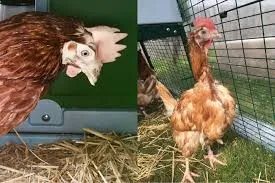Understanding Chicken Layer Cages for Optimal Egg Production and Welfare Management
Nov . 27, 2024 03:08 Back to list
Understanding Chicken Layer Cages for Optimal Egg Production and Welfare Management
The Importance of Chicken Layers Cages in Modern Agriculture
In the ever-evolving realm of agriculture, the method by which we rear poultry has significant implications on both productivity and animal welfare. Specifically, the use of chicken layers cages has become a topic of considerable debate and discussion. These specialized enclosures are designed to house hens that lay eggs for human consumption, and they play a pivotal role in modern farming practices.
At the heart of the chicken layers cages concept lies the need for efficiency. As the global population continues to rise, so does the demand for poultry products, particularly eggs. Utilizing cages allows farmers to maximize their production capabilities by providing a controlled environment where hens can lay eggs consistently. Each cage is designed to ensure that the birds have enough space to move around while also maintaining optimal conditions for egg production.
Furthermore, chicken layers cages contribute significantly to biosecurity measures. In densely populated farming areas, the risk of disease outbreaks can be substantial. By keeping hens housed within cages, farmers are better able to manage health risks. The confined space reduces the likelihood of transmission of diseases among birds, allowing for easier monitoring and quick action in the event of an infection. Routine inspections can be conducted more effectively in a cage system, contributing to overall flock health.
Animal welfare is an important consideration in the discussion of chicken layers cages. Critics assert that traditional battery cages can restrict a hen's natural behaviors, such as nesting, perching, and dust bathing. However, advancements in cage design have led to the development of enriched cages that aim to provide hens with more space and opportunities for natural behaviors while maintaining the efficiency of cage-based systems. These enriched systems may include features like perches, nesting areas, and scratching surfaces, striving to strike a balance between welfare and productivity.
chicken layers cages

Moreover, the economic aspect of chicken layers cages cannot be overlooked. Poultry farming is a competitive industry, and efficient production systems are essential for the financial sustainability of farms. Cages allow for higher stocking densities, reducing the cost per egg produced. This efficiency translates into lower prices for consumers and improved profitability for farmers. In a world where cost-effectiveness is increasingly important, the merits of using chicken layers cages can be significant.
It is also essential to address the environmental impact of poultry farming. While free-range and organic systems are praised for their sustainable practices, they often require more land and resources. Chicken layers cages, on the other hand, can lead to more efficient use of space and feed. By maximizing the output per square foot, farmers can help reduce the overall environmental footprint of egg production. Responsible management of these systems, including waste handling and resource utilization, is crucial to achieving sustainability goals.
In response to growing concerns regarding animal welfare, many regions are now implementing regulations that influence the design and operation of chicken layers cages. As a result, the industry is evolving rapidly. Farmers are encouraged to invest in cage systems that align with welfare standards while still meeting production goals. This shift demonstrates a commitment to improving animal husbandry practices while addressing consumer demand for ethically produced food.
In conclusion, chicken layers cages are an essential component of modern poultry farming. They offer a unique solution to the demands of efficiency, biosecurity, welfare, and economic viability. As the industry continues to adapt to both consumer concerns and regulatory changes, the focus on improving cage systems and practices will foster a more sustainable and responsible approach to egg production. By embracing innovation while prioritizing animal welfare, farmers can ensure that chicken layers cages remain a vital part of the agricultural landscape for years to come.
-
Hot Sale 24 & 18 Door Rabbit Cages - Premium Breeding Solutions
NewsJul.25,2025
-
Automatic Feeding Line System Pan Feeder Nipple Drinker - Anping County Yize Metal Products Co., Ltd.
NewsJul.21,2025
-
Automatic Feeding Line System Pan Feeder Nipple Drinker - Anping County Yize Metal Products Co., Ltd.
NewsJul.21,2025
-
Automatic Feeding Line System - Anping Yize | Precision & Nipple
NewsJul.21,2025
-
Automatic Feeding Line System - Anping Yize | Precision & Nipple
NewsJul.21,2025
-
Automatic Feeding Line System-Anping County Yize Metal Products Co., Ltd.|Efficient Feed Distribution&Customized Animal Farming Solutions
NewsJul.21,2025






